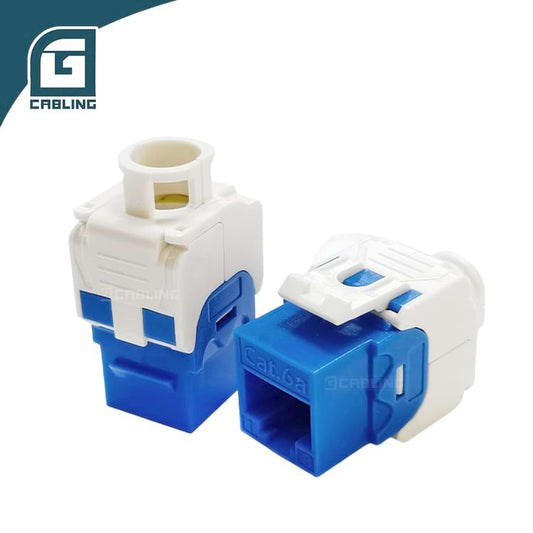What is a Keystone Jack?
What is a Keystone Jack and Why It Matters
If you’re setting up or upgrading a wired network, you may ask what is a keystone jack and why professionals use it so widely. A keystone jack is a small, standardized, snap-in connector module used in structured cabling systems. Understanding what is a keystone jack helps you choose the right wall plate, patch panel, or surface box for reliable Ethernet, phone, and AV connections.
What is a Keystone Jack: Basic Definition
To directly answer what is a keystone jack: it’s a removable connector module that snaps into a keystone opening. The front accepts a male plug (for example an RJ45 for Ethernet) while the back contains punch-down terminals or toolless IDC contacts. This modular approach lets you mix and match ports — Ethernet, HDMI, USB — within the same wall plate or panel.
What is a Keystone Jack: Types and Variants
Knowing what is a keystone jack also means knowing the available types:
- Ethernet (RJ45) keystone jacks — Cat5e, Cat6, Cat6A, Cat8 for different data rates.
- Shielded vs. Unshielded — shielded jacks (STP/FTP) for EMI-heavy environments; UTP for typical installs.
- AV and specialty modules — HDMI, USB, coax, phone (RJ11) and more.
- Toolless vs. Punch-down — toolless jacks speed up field work; punch-down offers a more permanent termination.
What is a Keystone Jack: How It Works
Technically, if you wonder what is a keystone jack at the wiring level: the front face mates with a male plug, and the rear has either IDC slots or punch-down posts that secure the cable conductors. The standardized size means any keystone module will fit compatible faceplates and patch panels, making swaps and upgrades straightforward.
What is a Keystone Jack: Installation Tips
Practical tips for installers who ask what is a keystone jack and want a smooth installation:
- Match the keystone jack rating to your cable (Cat6 jack for Cat6 cable).
- Follow wiring scheme T568A or T568B consistently across the site.
- Use a cable tester after termination to verify pair continuity and wiring order.
- Prefer toolless jacks for rapid deployments; use punch-down for high-density or permanent setups.
What is a Keystone Jack: How to Choose the Right One
When selecting a jack, consider these questions tied to what is a keystone jack for your project:
- Do you need 1Gb or 10Gb speeds? Choose Cat6A for 10Gb-ready systems.
- Is the environment noisy (EMI)? Pick a shielded jack.
- Do you want easy field replacement? Choose snap-in keystone modules.
- Need low-profile fits? Look for short/low-profile keystone jacks.
Applications — Where Keystone Jacks Are Used
After you understand what is a keystone jack, you’ll see them in wall plates at homes, patch panels in data centers, surface mount boxes for quick installs, and integrated modules on office desks or conference room plates. They keep systems tidy and upgradeable.

FAQ — Common Questions: What is a Keystone Jack?
Q: What is a keystone jack and which cable should I use?
Q: What is a keystone jack toolless vs punch-down?
Q: Can I mix different keystone jacks in one plate?




